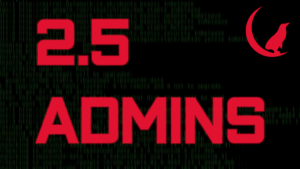
 2.5 Admins
2.5 Admins 2.5 Admins 233: 2.005 Admins
7 snips
Feb 6, 2025 The elegance of subnetting is celebrated alongside the need for custom benchmarking in networking. Exciting news surfaces as Xbox tests expansive external storage capabilities. BcacheFS faces challenges, prompting developers to seek alternatives like ZFS. The security of remote desktop tools is examined, leading to reassurances for users. Finally, the practicality of FortiGate firewalls is scrutinized for small offices, suggesting simpler options may be more effective.
AI Snips
Chapters
Transcript
Episode notes
Subnet Efficiency
- Subnetting efficiently determines if two addresses are in the same network using a bitwise AND operation.
- This simple math forms the basis of internet routing and scales remarkably well.
Custom Wi-Fi Benchmarking
- Jim uses custom benchmarking to accurately evaluate Wi-Fi performance by simulating real-world browsing behavior.
- He focuses on 99th percentile latency of many small requests, which better reflects user experience than median latency.
Netflix Streaming Benchmark
- Alan describes creating a custom benchmark to simulate Netflix streaming for a network performance evaluation.
- This involved generating random range requests from many files, similar to how Netflix downloads movie chunks.

